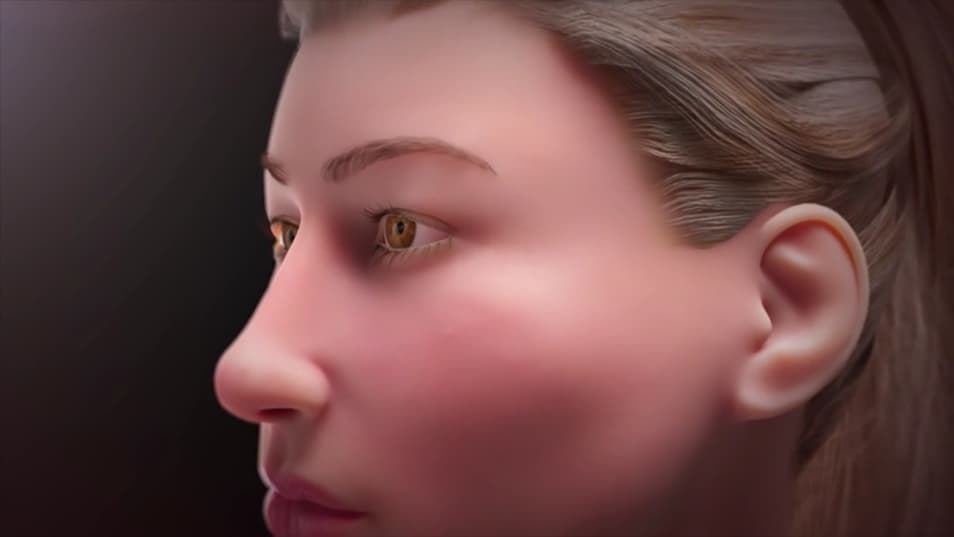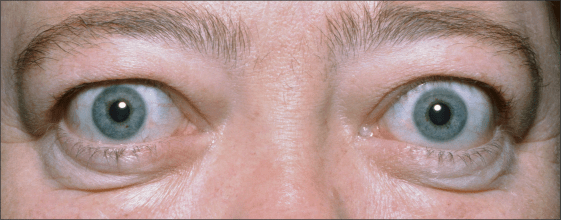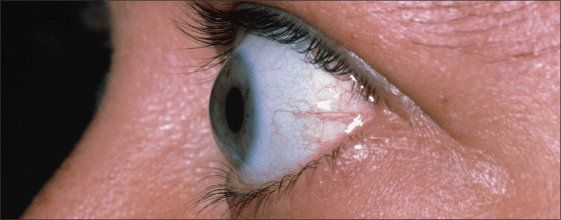Thyroid Eye Disease Phases
Thyroid Eye Disease (TED) is a serious, potentially vision-threatening condition that can get worse over time, but can be managed with treatment. When you have TED, your immune system mistakenly attacks the muscle and fat tissue behind your eyes, causing inflammation (redness and swelling) and scar tissue to form. TED has 2 phases. The first is called the “acute” phase, which you may hear your doctor describe as the “active” phase of TED. The second is called the “chronic” phase, which you may hear your doctor call the “inactive” phase of TED.
Learn what is happening to your eyes with TED
Thyroid Eye Disease (TED) and Graves' disease are both autoimmune disorders. While TED often develops in people who have Graves' disease, they are different conditions. That's why they require different doctors and different treatments.
Graves' disease affects the thyroid. TED affects the muscle and fat behind the eyes. Both diseases affect the eye, but in different ways. Watch the video below to learn more about the differences between TED and Graves' disease, and TED risk factors.

Announcer: Thyroid Eye Disease (or TED) is a rare disease affecting the eyes. TED is also referred to as Graves’ Eye Disease. TED can develop in patients with Graves’ disease. Although they are both autoimmune conditions, TED and Graves’ disease are different conditions as they affect different parts of the body.
In Graves’ disease, the body mistakenly attacks the thyroid glands, resulting in an overactive thyroid, or hyperthyroidism. In TED, the immune system attacks the muscles and fat tissues behind the eyes, causing redness and swelling known as inflammation. This process results in both the muscles and fat tissues behind the eyes expanding, as well as a buildup of fluid.
Treatments for Graves’ disease are targeted to help the thyroid but won’t help TED. Different medications and specialists are required to manage each condition. Some of the early symptoms of TED are eye pain, redness, dry or gritty eyes, or overly watery eyes, and blurry vision. These symptoms can be mistaken for other conditions, such as allergies.
TED is a progressive disease, which means it can get worse over time. Bulging eyes and eyelid swelling may occur as TED progresses. Eye swelling can make it hard to move the eyes. All these effects can lead to vision impairment, including double vision. In some cases, it is possible for swelling of fat and muscle tissue to push against the optic nerve, which puts vision at risk.
While it is not entirely known why some people develop TED and others do not, doctors have found certain factors that put people at greater risk. This includes having a thyroid condition such as Graves’ disease or hyperthyroidism, and Hashimoto’s disease, or hypothyroidism. The risk of developing TED may also be increased if patients have received radioactive iodine as treatment for Graves’ disease. In general, women are more likely to suffer from TED. Smoking and middle age further increase the risk of developing the condition.
As a rare and complicated disease, TED treatment requires a specialist who is familiar with treating it. Doctors who are most familiar with TED are usually specialized ophthalmologists, such as oculoplastic surgeons, neuro-ophthalmologists, and strabismus surgeons. Remember, TED can get worse over time. Getting treatment as early as possible can help prevent further eye damage.
Find a TED Eye Specialist at TEDdoctors.com.
What is happening to the eye during TED?
Healthy Eye
What’s happening in front of the eye?
- The eyeball and eyelid both appear normal (no redness/swelling)
What’s happening behind the eye?
- There is no inflammation (or swelling) behind the eye
- The muscle and fat tissue are not swollen and therefore do not press against the eye or on the optic nerve, allowing for normal vision
What is happening to the eye during TED?
Eye during acute phase
What's happening behind the eye?
- Muscle and fat tissue become inflamed and swell
- The swelling makes the eye bulge forward. The swelling can cause double vision and misaligned eyes (eyes that don’t work together), which can make it harder to read words on a page, and can cause problems with depth perception and balance. In some cases, the swelling can even threaten eyesight
- The eyelids can also be pulled back (you may hear your doctor call this “eyelid retraction”). This exposes more of the eye than normal, which can lead to other symptoms such as dry eyes
- Over time, scarring (also known as "fibrosis" [fahy-broh-sis]) can take place, and cause further damage even after the acute phase is over
What’s happening in front of the eye or visible changes?
- Visible changes appear, such as redness, eye pain, swelling, itchy eyes, watery eyes, eye pressure, lid retraction, swollen eyes, misaligned eyes (eyes that don't work together), vision changes, and/or bulging eyes. Your doctor may refer to this bulging as proptosis (prop-toe-sis) or exophthalmos (ek-sof-thal-muhs)
How long does the acute phase last?
- 6 months to about 2 years
- For some people, the acute phase can be shorter or longer
How is it treated?
- Lubricating eye drops/gel—may help provide relief from dry, gritty eyes
- Prism lenses—a feature installed in eyeglasses to help with double vision
- Steroids
- Radiation therapy (also called orbital radiotherapy)—often used together with steroids to help reduce swelling and double vision
- There is also a different way to treat TED. Learn about this treatment option for TED.
What is happening to the eye during TED?
Eye during chronic phase
What’s happening behind the eye?
- Scar tissue that began forming during the acute phase continues to cause damage to the eyes
Can symptoms still be present during the chronic phase?
- If left untreated, the scar tissue behind the eye can cause symptoms such as bulging eyes (exophthalmos), double vision (diplopia), misaligned eyes (strabismus), eye pain, remaining pressure, and other symptoms may also flare
How is it treated?
- There is a different way to treat TED. Learn about this treatment option
- Prism lenses—a feature installed in eyeglasses to help with double vision
- During the chronic phase, surgery—or multiple surgeries—are often used to correct any symptoms that are still there
- Surgery can reduce how much the eyes bulge, and can also correct double vision and correct misaligned eyes, called strabismus (struh-biz-muss)
- Surgery can also fix changes to the eyelids and other changes affecting how the eyes and face appear. Learn more about surgery for TED
When you first develop Thyroid Eye Disease, you may notice changes in symptoms
TED begins with an acute phase, which means that symptoms appear suddenly and often get worse. The acute phase can last from 6 months to 2 years. The inflammation (redness and swelling) and scarring that start to form during this phase can damage your eyes, and cause a number of changes.
You may notice the following appearance and vision changes:
- Redness
- Swelling
- Dry, gritty eyes
- Eye bulging
- Double vision
- Misaligned eyes or eyes that don’t work together
- Sensitivity to light
- Eye pain and pressure
The changes caused by TED may also affect your emotions, making you feel anxious or depressed.
Learn more about the symptoms and signs of TED as well as the impact it can have on your emotional well-being.
While the length of the acute phase of TED is different for everyone, it usually lasts between 6 months to 2 years. During this time, symptoms can change or continue to get worse. Ideally, treatment should be given during the acute phase.
What can Thyroid Eye Disease look like?


Thyroid Eye Disease may slow down over time, but that doesn’t mean it goes away
The acute phase is followed by the chronic phase of TED. You may have heard your doctor refer to this phase as the “inactive” phase of TED. However, that doesn’t mean your condition has gone away. You may still have symptoms during the chronic phase.
Only a TED Eye Specialist can determine which phase of TED you are in, but there are a few signs to watch for that may signal you are entering the chronic phase:
- Inflammation (swelling) has stopped or slowed
- Redness has decreased or gone away
- Eye bulging hasn’t gotten worse
Inflammation that began during the acute phase can cause scar tissue to build up over time. This can cause damage to the eyes, leaving you with ongoing symptoms like eye bulging, eye pain, eye pressure, double vision, and misaligned eyes, if not treated.
Having TED under control can help with flares. Flares can also occur after treatment. Learn about risk factors and potential triggers that can cause your TED to flare by using the Triggers and Flares Tool.
Early treatment decisions with your doctor are better, but treatment later in the course of TED may still help
The longer that TED goes untreated, the more likely it is for serious damage to happen to your eyes. While starting treatment in the acute phase is recommended, it may still help during the chronic phase.





